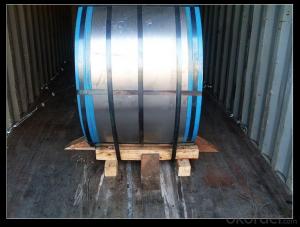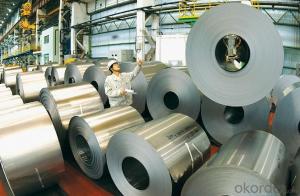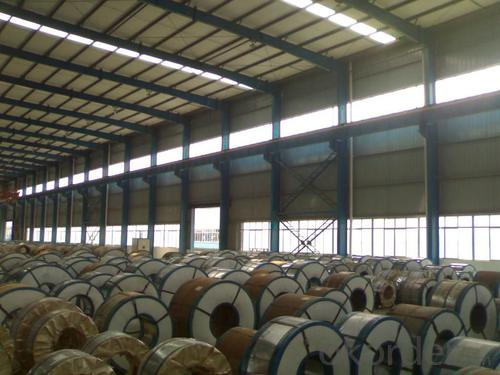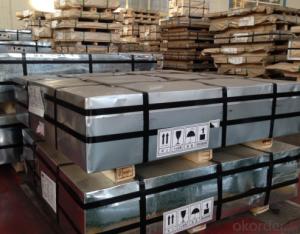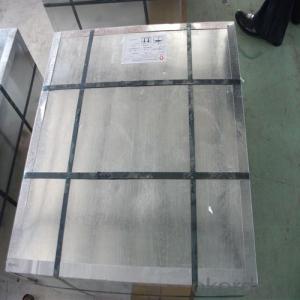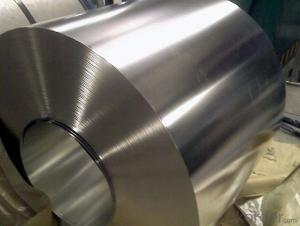Tin plate/Tinplate coils and sheets/Electrolytic tinplate
- Loading Port:
- Tianjin
- Payment Terms:
- TT or LC
- Min Order Qty:
- 25 m.t.
- Supply Capability:
- 20000 m.t./month
OKorder Service Pledge
OKorder Financial Service
You Might Also Like
1.Structure of Tinplate Description
Electrolytic Tin Plate Coils and Sheets for Foods Metal Packaging, is one thin steel sheet with a coating of tin applied by electrolytic deposition. Tinplate made by this process is essentially a sandwich in which the central core is strip steel. This core is cleaned in a pickling solution and then fed through tanks containing electrolyte, where tin is deposited on both sides. As the strip passes between high-frequency electric induction coils, it is heated so that the tin coating melts and flows to form a lustrous coat.
2.Main Features of the Tinplate
Appearance – Electrolytic Tin Plate is characterized by its beautiful metallic luster. Products with various kinds of surface roughness are produced by selecting the surface finish of the substrate steel sheet.
Paintability and printability – Electrolytic Tin Plates have excellent paintability and printability. Printing is beautifully finished using various lacquers and inks.
Formability and strength – Electrolytic Tin Plates have got very good formability and strength. By selecting a proper temper grade, appropriate formability is obtained for different applications as well as the required strength after forming.
Corrosion resistance – Tinplate has got good corrosion resistance. By selecting a proper coating weight, appropriate corrosion resistance is obtained against container contents. Coated items should meet 24 hour 5 % salt spray requirement.
Solderability and weldability – Electrolytic Tin Plates can be joined both by soldering or welding. These properties of tinplate are used for making various types of cans.
Hygienic – Tin coating provides good and non toxic barrier properties to protect food products from impurities, bacteria, moisture, light and odours.
Safe – Tinplate being low weight and high strength makes food cans easy to ship and transport.
Eco friendly – Tinplate offers 100 % recyclability.
Tin is not good for low temperature applications since it changes structure and loses adhesion when exposed to temperatures below – 40 deg C.
3.Tinplate Images
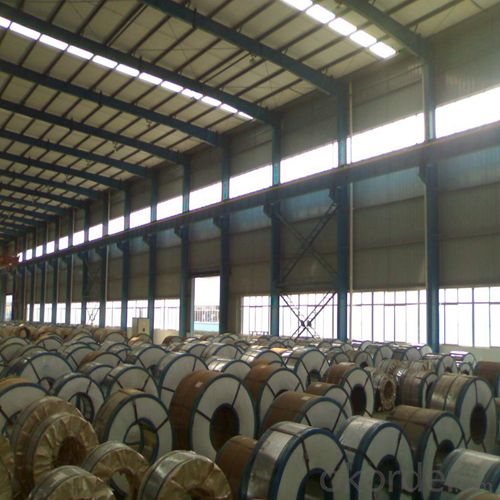
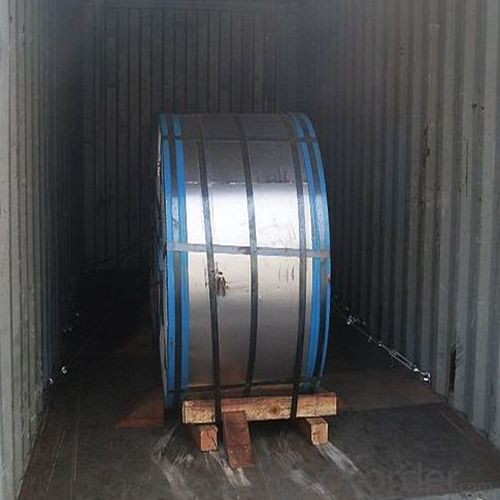
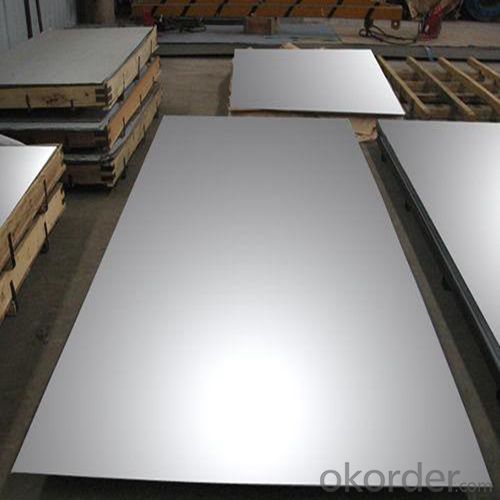
4.Tinplate Specification
Standard | ISO 11949 -1995, GB/T2520-2000,JIS G3303,ASTM A623, BS EN 10202
|
Material | MR,SPCC |
Thickness | 0.15mm - 0.50mm |
Width | 600mm -1150mm |
Temper | T1-T5 |
Annealing | BA & CA |
Coil Inner Diameter | 508mm |
Weight | 6-10 tons/coil 1~1.7 tons/sheets bundle |
Passivation | 311 |
Oil | DOS |
Surface | Finish,bright,stone,matte,silver |
5.FAQ of Tinplate
A. What is the package of tinplate? (Referred as below)
For sheets, thin plastic film + rust-proof paper + metallic cover + metallic angles+ steel band strips + fumigated wooden pallet.
For coil, thin plastic film + rust proof paper + metallic cover + steel band strips + fumigated wooden pallet
B. The surface of tinplate could you supply?
Stone finish, Bright finish, Matte finish, Silver finish
C. What quantity is the minimum order of tinplate?
Usually, the minimum quantity is 25MT. For special case, consult with us.
D. Can it make to be BA or CA for annealing?
Yes, both can do with.
E: Do you supply the high tin coating tinplate?
Yes, we can provide D5.6/2.8,E5.6/5.6, D11/2/5.6 etc, if you have some inquire, pls kindly send to us for offer.
- Q: How does tinplate contribute to the overall protection of packaged products?
- Tinplate contributes to the overall protection of packaged products by providing a strong and durable barrier against external elements such as moisture, light, and air. It helps to prevent corrosion, contamination, and spoilage, thereby extending the shelf life of the packaged products. Additionally, tinplate's resistance to impact and tampering ensures the integrity of the package, safeguarding the contents during transportation and handling.
- Q: What are the main applications of tinplate in the telecommunications industry?
- Tinplate is primarily used in the telecommunications industry for manufacturing high-frequency transformers and inductor cores. It is also utilized for shielding and grounding components due to its excellent electrical conductivity. Additionally, tinplate is commonly used in the production of waveguides, coaxial cables, and other electronic equipment where its corrosion resistance and mechanical stability are advantageous.
- Q: How does tinplate packaging contribute to product differentiation?
- Tinplate packaging contributes to product differentiation by providing a unique and distinctive look to the product. The shiny and attractive appearance of tinplate packaging sets it apart from other packaging materials, catching the attention of consumers and creating a memorable impression. Additionally, tinplate packaging can be customized with various designs, colors, and patterns, allowing brands to showcase their uniqueness and stand out in the market. Overall, tinplate packaging helps products to differentiate themselves from competitors and create a strong brand identity.
- Q: What are the different types of tinplate containers available?
- There are several types of tinplate containers available, including cans, tins, drums, and pails. These containers can vary in size, shape, and design to suit different purposes and industries.
- Q: Can tinplate be used for packaging products with sharp edges?
- Yes, tinplate can be used for packaging products with sharp edges. Tinplate is known for its durability and strength, making it suitable for packaging products that have sharp edges without causing any damage to the packaging material.
- Q: Can tinplate be used for signage?
- Yes, tinplate can be used for signage. It is a versatile material that is durable, lightweight, and resistant to corrosion. Tinplate can be easily shaped and printed on, making it suitable for various signage applications.
- Q: How many kinds of tinplate are there? What is the code number?
- Tinplate, also known as tin plated iron, is the common name for tin plated steel sheet. The English abbreviation is SPTE. It is a cold-rolled low carbon steel sheet or strip coated with commercially pure tin on both sides. Tin plays a major role in preventing corrosion and rusting. It will be the steel strength and formability and corrosion resistance of tin soldering, and beautiful appearance with a material, corrosion resistant, non-toxic, high strength and good ductility properties.
- Q: Can tinplate be used for packaging of organic products?
- Yes, tinplate can be used for packaging of organic products. Tinplate is a durable and non-reactive material that provides a protective barrier against external elements, ensuring the freshness and integrity of organic products. Additionally, tinplate is recyclable, making it an environmentally friendly choice for packaging organic products.
- Q: Can tinplate be used for aerosol cans?
- Yes, tinplate can be used for aerosol cans. Tinplate is a type of steel coated with a thin layer of tin, which provides excellent corrosion resistance and makes it suitable for packaging products like aerosol cans.
- Q: What are the main factors influencing the pricing of tinplate?
- The main factors influencing the pricing of tinplate include the cost of raw materials such as tin and steel, supply and demand dynamics in the market, production and transportation costs, global economic conditions and trade policies, technological advancements in the tinplate industry, and fluctuations in currency exchange rates. Additionally, any regulations or tariffs imposed on tinplate imports or exports can also impact its pricing.
Send your message to us
Tin plate/Tinplate coils and sheets/Electrolytic tinplate
- Loading Port:
- Tianjin
- Payment Terms:
- TT or LC
- Min Order Qty:
- 25 m.t.
- Supply Capability:
- 20000 m.t./month
OKorder Service Pledge
OKorder Financial Service
Similar products
Hot products
Hot Searches
Related keywords

